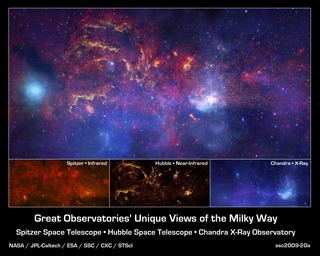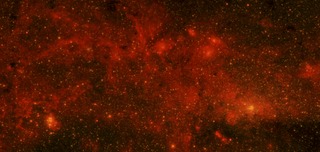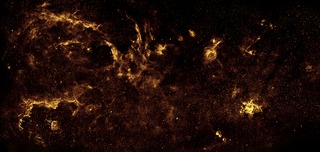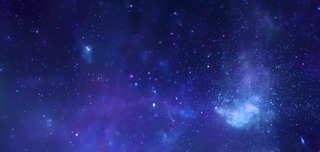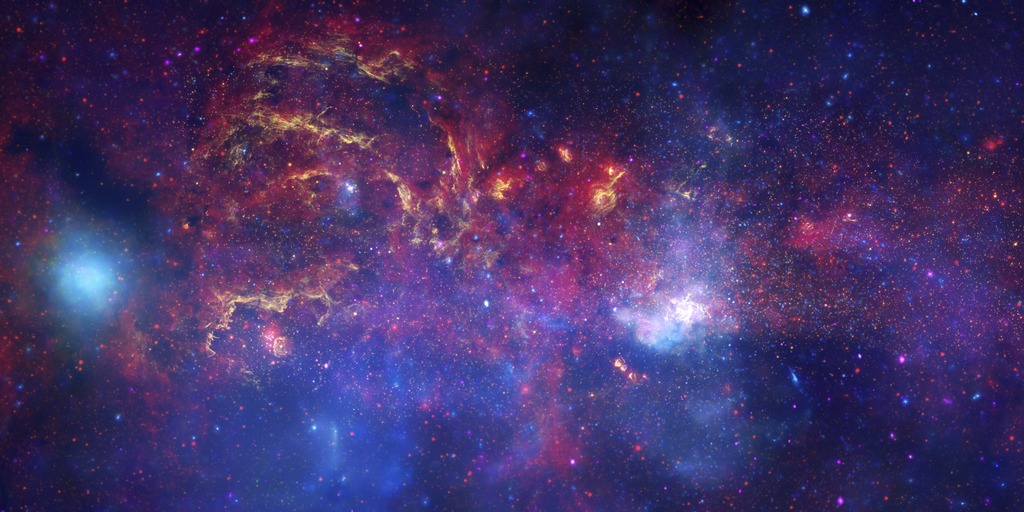
Credit: NASA/JPL-Caltech/ESA/CXC/STScI
Observation • November 10th, 2009 • ssc2009-20a1
ssc2009-20a1
In celebration of the International Year of Astronomy 2009, NASA's Great Observatories -- the Hubble Space Telescope, the Spitzer Space Telescope, and the Chandra X-ray Observatory -- have collaborated to produce an unprecedented image of the central region of our Milky Way galaxy.
In this spectacular image, observations using infrared light and X-ray light see through the obscuring dust and reveal the intense activity near the galactic core. Note that the center of the galaxy is located within the bright white region to the right of and just below the middle of the image. The entire image width covers about one-half a degree, about the same angular width as the full moon.
Each telescope's contribution is presented in a different color.
Yellow represents the near-infrared observations of Hubble. They outline the energetic regions where stars are being born as well as reveal hundreds of thousands of stars.
Red represents the infrared observations of Spitzer. The radiation and winds from stars create glowing dust clouds that exhibit complex structures from compact, spherical globules to long, stringy filaments.
Blue and violet represent the X-ray observations of Chandra. X-rays are emitted by gas heated to millions of degrees by stellar explosions and by outflows from the supermassive black hole in the galaxy's center. The bright blue blob on the left side is emission from a double star system containing either a neutron star or a black hole.
When these views are brought together, this composite image provides one of the most detailed views ever of our galaxy's mysterious core.
About the Object
- Name
- Galactic Center • Milky Way
- Type
- Nebula > Type > Interstellar Medium
- Galaxy > Component > Center/Core
- Distance
- 26,000 Light Years
